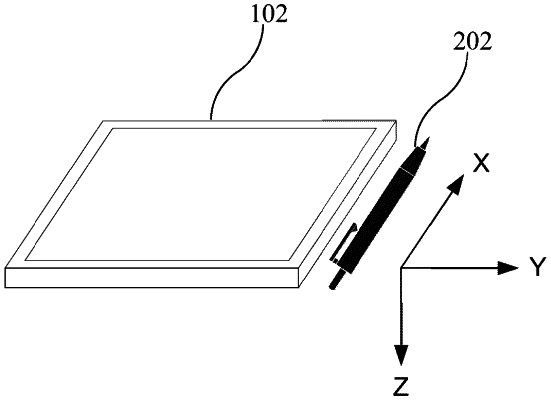| CPC G06F 3/0346 (2013.01) [G06F 3/017 (2013.01)] | 8 Claims |

|
1. A method of roll angle estimation for an input/gesture device having a 3-axis gyroscope, as a first type of motion sensor, and a 3-axis accelerometer, as a second type of motion sensor, the input/gesture device being in communication with a mobile device having a surface, the method comprising:
measuring 3D linear motion or obtaining measurements of the 3D linear motion of the input/gesture device based on reading from the 3-axis accelerometer and the 3-axis gyroscope of the input/gesture device;
measuring 2D planar linear motion or obtaining measurements of the 2D planar linear motion of the input/gesture device based on reading from a third type of sensor;
correlating the 3D linear motion with the 2D planar linear motion; and
determining the roll angle of the input/gesture device relative to the surface of the mobile device by solving for frame alignment between an inertial frame and a mobile device frame using a result of the correlating step,
wherein the step of determining the roll angle further comprises:
applying a rigid body formula to estimate an acceleration of the tip of input/gesture device, rather than a location of the 3-axis accelerometer;
representing the 2D planar linear motion coordinates of the tip in 3D;
applying a DC-blocking filter on both a 3D pointer trajectory from the surface and double integrated 3-axis accelerometer data to generate two signals; and
determining a frame alignment that aligns the two signals.
|